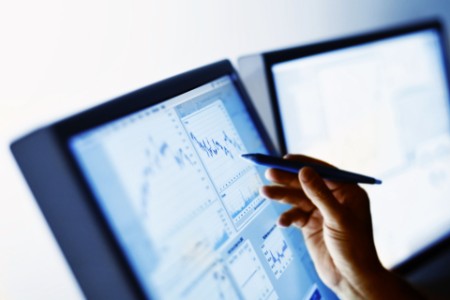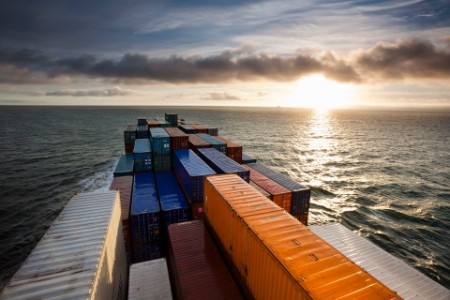
The better the question
How can trade finance balance compliance costs and technology?
Even as the trade landscape shifts faster than ever, trade finance remains focused on manual processes. This is now starting to change.
Banks play a vital role facilitating international trade by providing their clients with a wide array of offerings. Supply chain finance includes distributing short-term credit to provide better working capital for the buyer and seller. Trade finance involves lending money to support the trading of commodities or working with export credit agencies to offer financing that may otherwise be risky. In both cases, there are numerous compliance checks associated with these offerings.
As a result, a myriad of importers and exporters rely on these financial intermediaries to reduce their risk exposure.
However, with trading relationships in a state of increased uncertainty over the last couple of years owing to rising tariffs and geopolitical and market volatility, managing trade finance has become significantly more challenging.
Moreover, the rising costs of providing trade finance, coupled with greater regulatory scrutiny, are weighing on banks’ trade finance growth prospects.
Seeking efficiency
A typical trade transaction goes through numerous compliance checks during its life cycle, with each review racking up costs along the way. On average, a large trade finance bank can spend anywhere from US$25m to US$42m annually on risk, compliance, sanctions and anti-money laundering (AML) tasks – all without growing its business.
Underpinning these tasks is the continued use of paper to document millions of transactions. Although most banks acknowledge that using paper is costly and time consuming, the shift to automation has been slow, with few viable solutions implemented effectively across the industry.
In addition, the especially complex and distributed nature of trade finance means that it is highly exposed to financial crime. An estimated US$1t of financial crime proceeds flow through the US$9.1t industry’s trade channels each year. This not only threatens the global economy, but also causes monetary and reputational damage to financial institutions.
To address these key challenges, trade finance banks must change how they manage their manual compliance processes and existing detection measures to tackle illicit trade finance activity. Here, technology has a vital role to play.
Increased automation, along with artificial intelligence (AI) and machine learning (ML), can help trade finance reduce overall operational costs and improve customer experience.
One global trade finance bank recognized that, to make these necessary changes, it had a better chance of success by collaborating with external partners to find an innovative, digital solution that could benefit the trade finance sector as a whole.
The bank’s previous experience of working with EY teams, and its confidence in EY technology collaborator, SAS, led it to believe that by working together, the three firms could find technological alternatives to its paper-based, manual processes, helping the bank to play a greater role in facilitating and financing international trade in the future.

The better the answer
Going digital means better trade risk management
TRACK gives trade finance teams the opportunity to improve their compliance processes in a digital-first, fully automated way.
To gain a thorough understanding of the bank’s trade finance operations, the EY team first visited its operational facilities to see how its vast number of trade transactions were processed on any given day. At the time, the bank had a few thousand people, based around the world, who were manually processing approximately nine million trade transactions each year.
This on-the-ground analysis helped ensure a deeper understanding of the challenge facing the bank and its staff. During this phase, it also became apparent that advances in technological processes could provide the trade finance function with an opportunity to be more effective at collecting, digitizing and analyzing the data required to monitor financial crime.
This in-person research gave the EY team an opportunity to develop and consolidate their strategic vision on how to effectively apply automation and advanced analytics to the bank’s trade finance operations, while ensuring the necessary compliance procedures would be more than met.
The next generation of trade finance
EY’s experience in compliance, risk and technology consulting in financial services, together with SAS’ analytics platform, combined to help enable the creation of a new framework and toolkit for addressing this core challenge: the Trade Risk Analytics Compliance Kit (TRACK).
TRACK harnesses the power of advanced analytics and robotic process automation to transform the way that trade finance teams identify and control risk. Its risk analytics scoring engine can analyze large volumes of trade transactions using natural language processing, text analytics and third-party data.
It powers the automated review of millions of transactions via ML models, while simultaneously addressing complex risks in international trade, resulting in a unified view of the risk. This includes detecting patterns of illicit trade finance activity as bad actors employ increasingly sophisticated techniques to launder money, illegally transport goods, and avoid sanctions and boycott.
By applying analytics to automate these compliance reviews, TRACK provides a broad database of use cases that drives the analytics solution, covering regional and country-specific compliance requirements.
These include:
- AML and fraud: Anti-money laundering rules derived from regulatory guidance, coupled with fraud-specific flags.
- Sanctions and export controls: Enhancing existing screening with additional transactional data and monitoring the export of commodities and technology.
- Anti-boycott measures: Detection of words or phrases that violate US anti-boycott rules.
- Military/dual-use detection: Identification of goods that could be used for military or proliferation application.
“The combination of EY regulatory expertise and our collaborations with various regulatory bodies was essential in helping us to effectively develop and implement a solution like TRACK,” explains Sandeep Pakki, EY US Financial Services Regulatory & Compliance Advisory Manager. “In helping the bank on this journey, it was crucial to bear in mind that regulation is just as important as technology when deploying a solution like TRACK in such a high regulatory environment.”

The better the world works
A new horizon for trade finance
Trade finance is one of the oldest functions in banking – it is time for change.
Typically, a bank’s trade finance analysts could spend up to 25% to 30% of transaction processing time performing regulatory compliance checks. And, on top of this, the bank’s initial screening processes can often lead to a high rate of “false positives” which are eventually proven otherwise.
With the new system, transactions can now be rapidly escalated through different workflows depending on the severity and type of risk, with advanced anomaly detection distinguishing between normal and abnormal behavior. This helps enable banks’ trade finance analysts to prioritize the most urgent transactions. For example, TRACK will identify red flags and create a risk score which can help determine next steps in the transaction process:
- No risks identified – straight through processing
- Low risk flags – auto-clearance
- Red flags present – operator review required or auto-escalation
Once the level of risk is identified, escalated transactions are enriched with analytic findings and supporting evidence, facilitating a targeted investigation.
Functionality like this means TRACK can help enable banks to reduce their percentage of false positives, while increasing the number of genuine red flag alerts.
The platform also proves that, when working within the trade finance industry at scale, providing broad coverage across various compliance checks will not only drive operational efficiencies, but will enrich banks’ trade finance insights, helping to grow this function at scale.
Trade finance exists to ensure fairness, transparency and compliance in international trade. Without keeping pace with digital transformation, global trade – already feeling the pressure of trade wars, shifting geopolitics and disruption from new threats such as COVID-19 – is threatened by non-compliant parties and nefarious actors.
Trade finance functions that adopt appropriately targeted automation and advanced analytics as integral parts of their compliance operations will be more important than ever in this uncertain international environment. With such high volumes of transactions and increasing complexity, efficient trade financing is key to ensuring that warehouses, harbors and supply chains are running smoothly – thus keeping the age-old business of international trade firmly afloat.
Related article
The key differentiators of TRACK are its maturity and our ability to deploy it to global trade finance organizations at scale.
The Team
Contact us
Like what you’ve seen? Get in touch to learn more.



